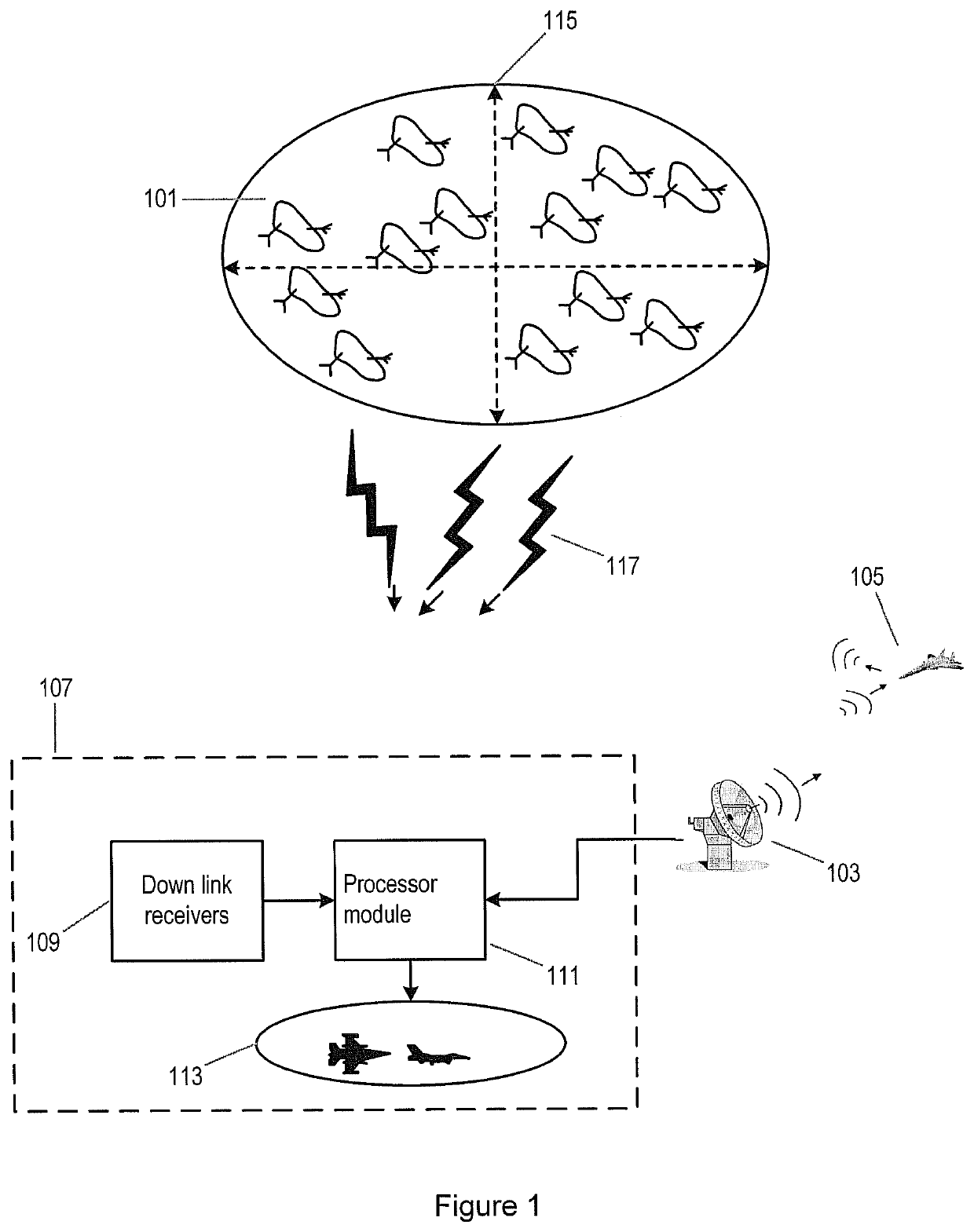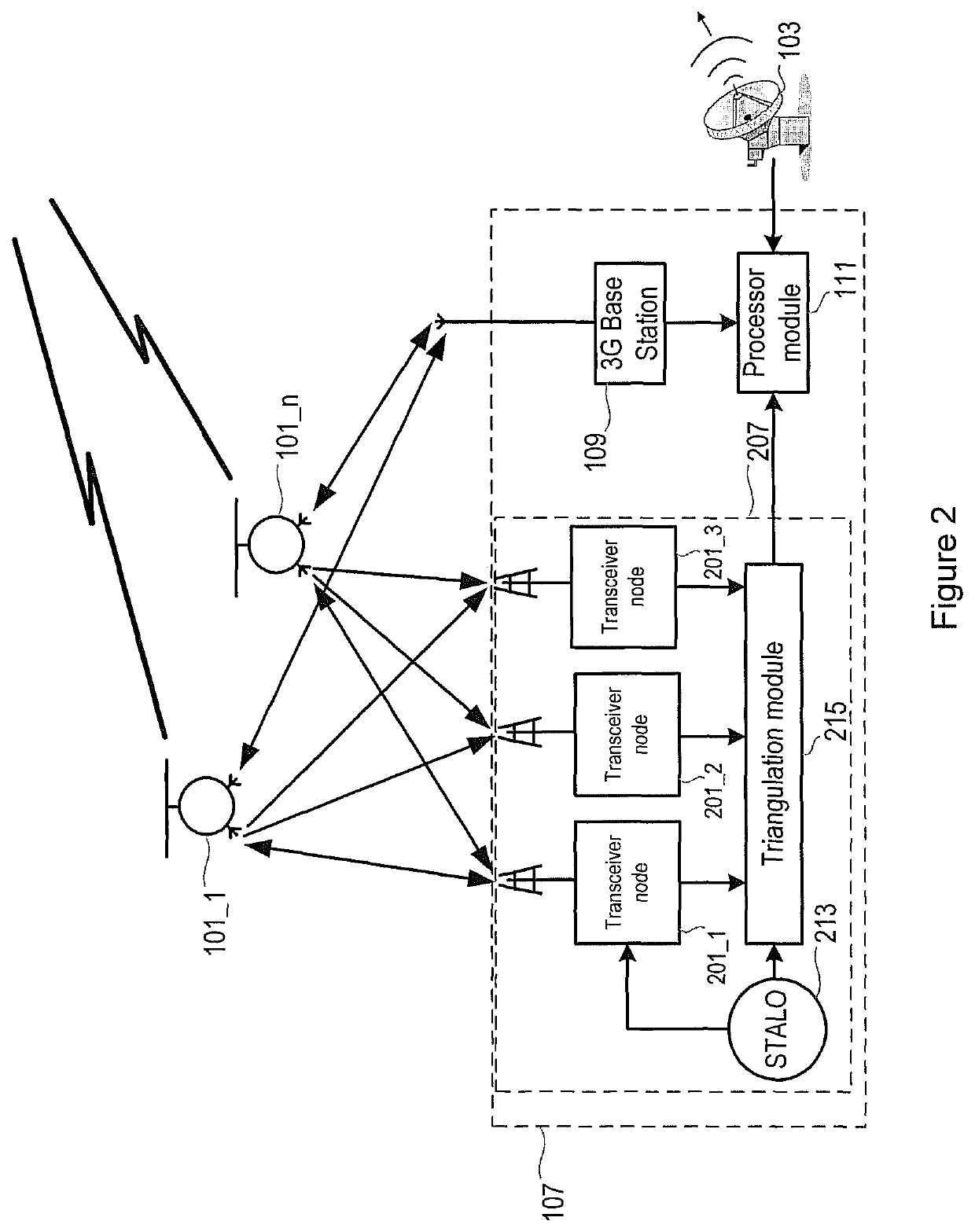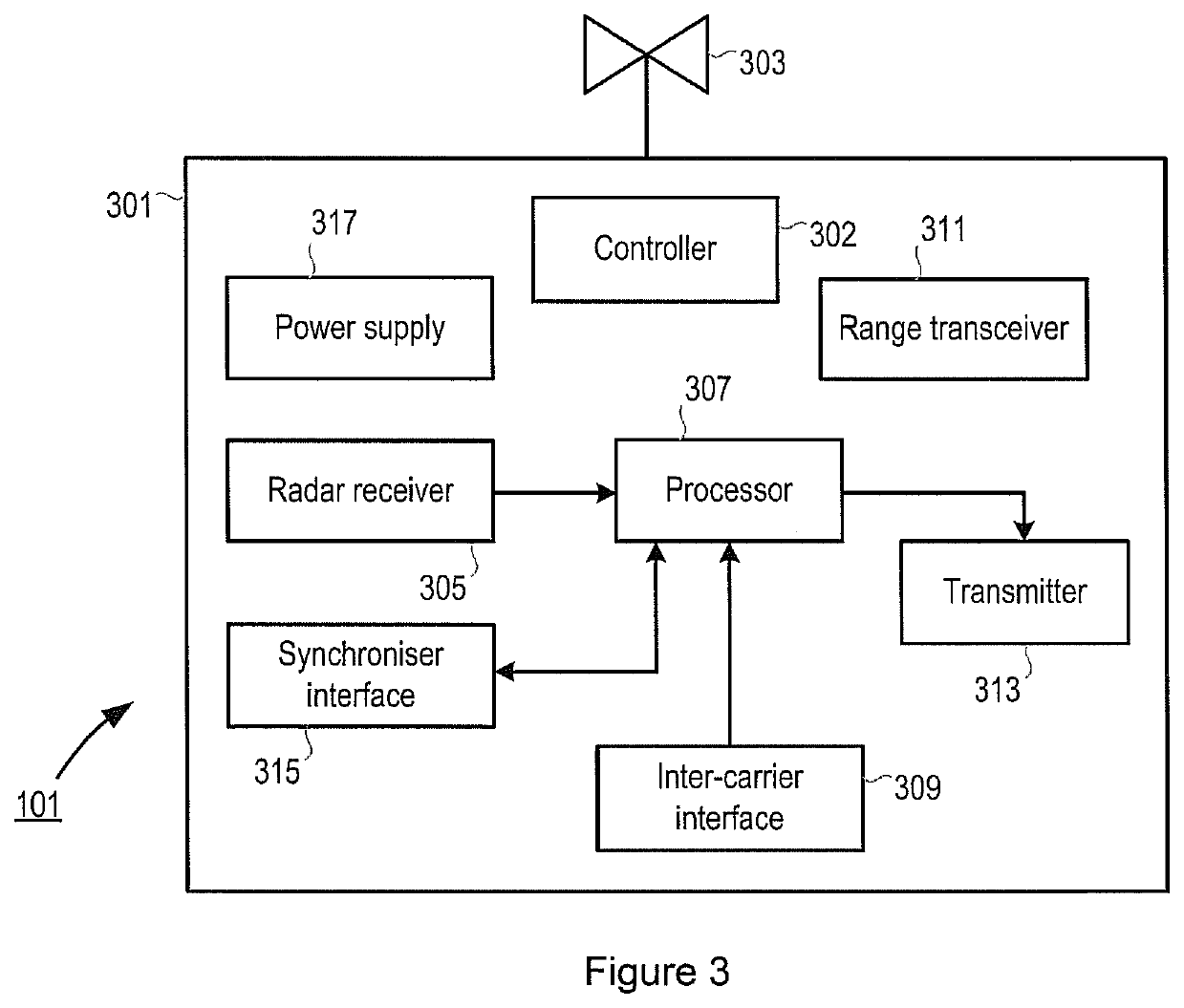Radar imaging system
a technology of radar imaging and imaging system, applied in the field of radar imaging system, can solve the problems of limited performance, long acquisition time, and reduced performance when imaging moving targets
- Summary
- Abstract
- Description
- Claims
- Application Information
AI Technical Summary
Benefits of technology
Problems solved by technology
Method used
Image
Examples
Embodiment Construction
[0045]The system according to an embodiment is shown in FIG. 1. The system comprises a plurality of airborne carriers 101, such as unmanned aerial vehicles (UAVs). Each airborne carrier comprises a radar receiver and communications equipment (described in more detail with reference to FIG. 3). The system includes a radar system 103 and a base-station 107. The base-station 107 comprises at least one downlink transceiver 109, a processor module 111 and a display module 113. The radar system 103 comprises a transmitter and receiver, and is capable of locating and tracking targets independently. The transmitter of the radar 103 is used to illuminate the target both for its own receiver, and also for the receivers in the airborne carriers 101.
[0046]The plurality of airborne carriers 101 are substantially similar, are miniature and may comprise rotary or fixed wing airborne carriers 101. The plurality of airborne carriers are positioned in close proximity in a predefined area to form an a...
PUM
 Login to View More
Login to View More Abstract
Description
Claims
Application Information
 Login to View More
Login to View More - R&D
- Intellectual Property
- Life Sciences
- Materials
- Tech Scout
- Unparalleled Data Quality
- Higher Quality Content
- 60% Fewer Hallucinations
Browse by: Latest US Patents, China's latest patents, Technical Efficacy Thesaurus, Application Domain, Technology Topic, Popular Technical Reports.
© 2025 PatSnap. All rights reserved.Legal|Privacy policy|Modern Slavery Act Transparency Statement|Sitemap|About US| Contact US: help@patsnap.com



